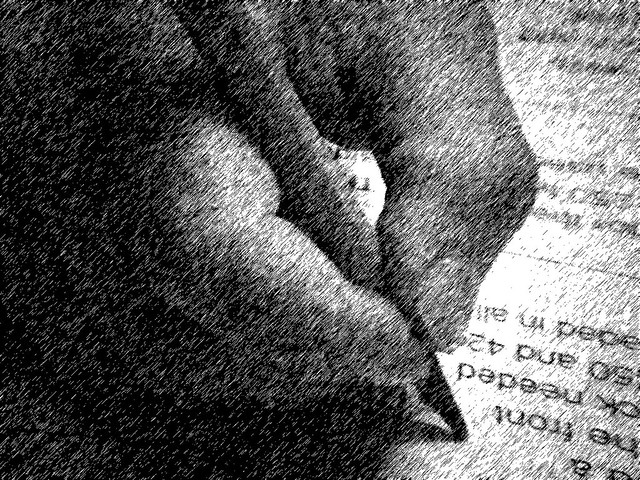I’m busy writing the first draft of chapter one, and so have had neither time nor inclination to write much for this blog of late. That said, all my thesis-scribbling did inspire this post, for it occurred to me, as I sketched the umpteenth plan for spending this section’s allotted word count, that I now think of writing, and indeed experience writing, in a completely different way to how I used to. Today, then, I propose a nostalgic trip back into my own metaphors for writing, finishing with my current ways of getting words onto a page.
My earliest memory of writing comes from my time at Roger de Clare first school, where I was frequently locked in an effort to write the longest stories for creative writing possible. The real goal, of course, was to write more than my friend, and to this end I adopted various strategies: over-large hand-writing, and, better yet, lots of dialogue. My magnum opus was a Christmas Tale, which recounted Santa’s visits to many, many places, each time chatting with the improbably awake locals before moving on: not only was there lots of dialogue here, but I’d also stumbled across the powerful weapon of an extensible structure. I got to fourteen pages, and I’m sure my teacher despaired.
I have to skip forward a few years now, to the difficult age of fourteen, when, deep in essays for my SATs, I felt as though I was not so much spinning out an endless thread but rather tying and tangling myself into corners, and then trying to find my way out of them, only to twist myself into some new dilemma. I got good marks for these essays, but writing them was tough.
For my GCSEs, so from fifteen to sixteen, I stopped thinking about writing as a series of quandries and extrications. Instead, mining was the metaphor du jour. Our teacher made us write quite a lot of essays, and my style improved no end because of this. Increased frequency also gave me more opportunities to compare individual pieces of work against each other, and to try and predict whether my latest production was up to scratch or not. In the end, I came to conclude that each piece was like the excavation of its set text, and that sometimes I would strike a rich vein of material, and write gold or diamonds, while – during less successful attempts – I’d throw up only dirt. I didn’t plan these essays very much, but enjoyed burying myself in them no end.
 University brought unsurprising changes to how I thought about these things. I’d already started to plan, but did so more and more from the age of nineteen onwards. Having read the week’s set texts, I’d then sit in front of a blank page and write out (by hand, I always plan by hand: the computer is too slow) everything I wanted to talk about, clustering it here and there. This done, I’d trace a line from one topic to another, and then begin to write, not so much mining now but sailing, catching the gust of one idea and letting it propel me – with a little tacking – to the next argument.
University brought unsurprising changes to how I thought about these things. I’d already started to plan, but did so more and more from the age of nineteen onwards. Having read the week’s set texts, I’d then sit in front of a blank page and write out (by hand, I always plan by hand: the computer is too slow) everything I wanted to talk about, clustering it here and there. This done, I’d trace a line from one topic to another, and then begin to write, not so much mining now but sailing, catching the gust of one idea and letting it propel me – with a little tacking – to the next argument.
Between my undergraduate and my MPhil, I spent quite a lot of time in France, where writing dissertations proceeds according to a sharply defined, tripartite structure. Influenced by this, my masters work was planned along similar lines, and the only metaphors available for this are, for me, all synthetic: it felt like engineering arguments, or balancing different literary chemicals.
This brings me to the present. After weaving, mining, sailing, and engineering, I now tend to talk about writing in an unusual mix of the bucolic and the analytic. Take this chapter draft, for instance, or a recent conference paper: I wrote both things at least twice (thrice in the case of the paper), even when I had already planned out my argument in detail beforehand. Those early drafts were, for me, like a kind of prospecting, a way of discovering the lay of the land: I had my plan as a map, but I needed to feel the ground under my feet as well. That done, later drafts involve the plotting of a path through the terrain, careful to avoid the quicksands of pedantry or the deafening waterfalls of obviousness, and here I am more analyst than bumpkin. The landscape sometimes turns into a chessboard, every paragraph a move which opens certain lines of play even as it closes others. Previous writers, and my own early thoughts, play the opposition.
Do you have metaphors for writing?